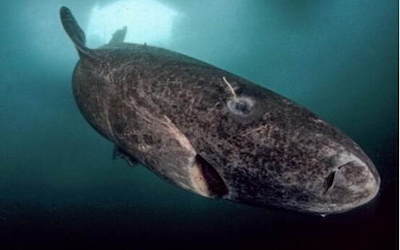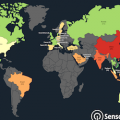PTE考生目前最大的问题之一就是练习题缺乏。除了有限的基本官方书(PLUS,Testbuilder, OG)之外就没有题了。很多英语基础不是很扎实的同学很难找到练习材料。悉尼文波雅思PTE培训学校专门为澳洲,尤其是悉尼、墨尔本的PTE考生准备了适合PTE听力阅读练习的科学60秒。各位PTE同学可以练习PTE听力中的summarise spoken text和PTE口语中的retell lecture,PTE听力口语-科学60秒-Frosty Moss练习记笔记技巧和复述。废话少说,下面开始:
听力内容:
60秒科学节目(SSS)是科学美国人网站的一套广播栏目,英文名称:Scientific American – 60 Second Science,节目内容以科学报道为主,节目仅一分钟的时间,主要对当今的科学技术新发展作以简明、通俗的介绍,对于科学的发展如何影响人们的生活环境、健康状况及科学技术,提供了大量简明易懂的阐释。
This is Scientific American — 60-Second Science. I’m Christopher Intagliata.
The way we sample much of the world’s oceans, to see what’s living down there, is pretty basic: Ask fishermen. Or just stick a net down there, and examine what we catch. Neither method is ideal. “Because you basically catch the fish and kill them.” Philip Francis Thomsen, a biologist at the Natural History Museum of Denmark. Another drawback, he says, is you can’t do it everywhere. “If the bottom is too soft, or too rocky, or there’s a coral reef, you don’t want to use this invasive method above sensitive habitat.”
So Thomsen and his team investigated an alternative, that’s been used in freshwater with some success: they sampled the diversity and abundance of marine life using something called environmental DNA, or “eDNA.” Basically, genetic material that fish leave behind. “So that is all sorts of bodily fluids that are expelled by the fish during its lifetime.” And beyond its lifetime too—like when one fish gets eaten, and its remains get expelled in the fecal matter of another. Bingo: eDNA.
Thomsen and his colleagues sampled seawater at various depths off the southwest coast of Greenland. And then fished out the eDNA in those samples. The researchers were able to identify 26 of the 28 fish families caught in the same area in trawling nets—and at similar abundances, too. They also found a few unique families missed by the nets, and lots of DNA from a species that, in net samples, seemed rare: the Greenland shark.
“We found the shark in almost all of the samples. That is because the shark just avoids the trawl. So here’s an example of a species that is actually better surveyed by the environmental DNA than the trawling.” The study is in the journal PLoS ONE.
The technique’s not quite ready for primetime in the marine setting: for one, ocean currents could transport a species’ DNA far from where the fish may actually be found, and give inaccurate measures. But in the future, it might take the fishing out of fish surveys.
Thanks for listening for Scientific American — 60-Second Science Science. I’m Christopher Intagliata.
墨尔本悉尼文波PTE原创首发
更多精彩请持续关注微信wenbo_tv2。





